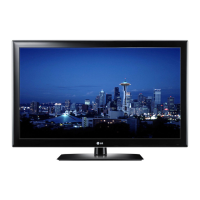LG TV screen is too dark, how to fix it?
- TTimothy RyanAug 26, 2025
If your LG TV screen appears extremely dark even when powered on, adjust the brightness and contrast settings in the menu option.

LG TV screen is too dark, how to fix it?
If your LG TV screen appears extremely dark even when powered on, adjust the brightness and contrast settings in the menu option.
Why is there no sound on my LG TV but picture is fine?
If your LG TV displays no sound but shows images, first, press the VOL + or - button to adjust the volume. Check if the sound is muted by pressing the MUTE button. Try switching to other channels to rule out a broadcast issue. Ensure the audio cables are properly connected and verify that the TV Speaker feature is enabled in the menu.
| Audio system | Dolby Digital |
|---|---|
| RMS rated power | 20 W |
| Number of speakers | 2 |
| Game mode | Yes |
| Number of OSD languages | 31 |
| Response time | 2.4 ms |
| Display diagonal | 32 \ |
| Display technology | LCD |
| Native aspect ratio | 16:9 |
| Native refresh rate | 100 Hz |
| Supported video modes | 1080i, 1080p |
| Display diagonal (metric) | 107 cm |
| Supported graphics resolutions | 1920 x 1080 (HD 1080) |
| RS-232 ports | 1 |
| Composite video out | 0 |
| HDMI ports quantity | 4 |
| USB 2.0 ports quantity | USB 2.0 ports have a data transmission speed of 480 Mbps, and are backwards compatible with USB 1.1 ports. You can connect all kinds of peripheral devices to them. |
| Annual energy consumption | 197 kWh |
| Product color | Black |
| Power consumption (standby) | 0.28 W |
| Power consumption (typical) | 135 W |
| Wi-Fi | No |
General precautions to prevent electric shock, fire, damage, and ensure safe operation.
Guidance on safe use and handling of the power cord and plug to prevent hazards.
Lists the items to check in the product box upon purchase.
Lists optional accessories available for compatible LG TVs.
Identifies external parts and touch buttons on different TV models.
Guidelines for safely handling the TV, including lifting, moving, and attaching the stand.
Instructions for attaching the TV stand to the TV base.
Instructions for mounting the TV on a table or a wall.
Explains functions, registration, usage, and precautions of the Magic Motion remote control.
How to connect TV signals and perform the initial setup process.
Controls for watching TV, using the quick menu, and navigating the home menu.
Configuring network settings, connecting wirelessly, WPS, Ad-hoc, and tips for connectivity.
Accessing online services, downloading apps, and registering LG Apps accounts.
Navigating, managing, purchasing, and installing applications through LG Apps.
Connecting USB/DLNA devices, installing software, and playing shared media.
Explains 3D technology, safe viewing practices, glasses usage, and viewing distance.
Steps to view 3D content and adjust imaging settings like mode, size, and depth.
Information about obtaining source code and license terms for open-source software.
Shows how to connect various external devices to the TV and general notes.
How to connect A/V devices using HDMI, DVI, Component, and Composite cables.
How to connect a PC using HDMI, DVI, or RGB cables for optimal display.
Connects USB devices, headphones, and the Wireless Media Box for media access and transmission.
Connects and controls HDMI-CEC devices, activating and using SIMPLINK menus.
Instructions for updating TV firmware, cleaning the TV, and preventing image burn-in.
Common issues and solutions for general TV operation and remote control problems.
Troubleshooting steps for audio-related issues like no sound or speaker problems.
Solutions for video display problems and movie file playback issues.
Instructions for connecting IR devices and details on remote control IR codes.
How to connect and configure external devices via RS-232C port, including wiring and ID settings.
Details communication parameters and provides a reference list of commands for external control.
Explains the transmission and receiving protocol for external control.
Overview of the main menu options available in the TV's setup.
How to tune, store, and edit TV channels for optimal viewing.
Options for adjusting picture settings like aspect ratio, picture mode, and energy saving.
Adjustments for audio settings like volume, sound mode, and surround sound.
Settings for clock, on/off timers, and sleep timer functions.
Options for locking channels, programs, and setting movie ratings for parental control.
Customizing general settings like language, caption, and power indicator.
Configuring network settings for wired or wireless connections.
Accessing TV support, firmware updates, and diagnostic tests.
